Laurent Craste Museum show in NY
Everson Museum of Art Presents Iconoclasts: The Art of Laurent Craste
In case you missed it, there was a wonderful article about the artist DJ Hall in a local newspaper recently. DJ received national acclaim as a photorealistic painter depicting the Palm Springs lifestyle. She became a local celebrity after her expansive 35 year retrospective at the Palm Springs Art Museum ten years ago. Read the entire article here.
Read the entire article View Available Works
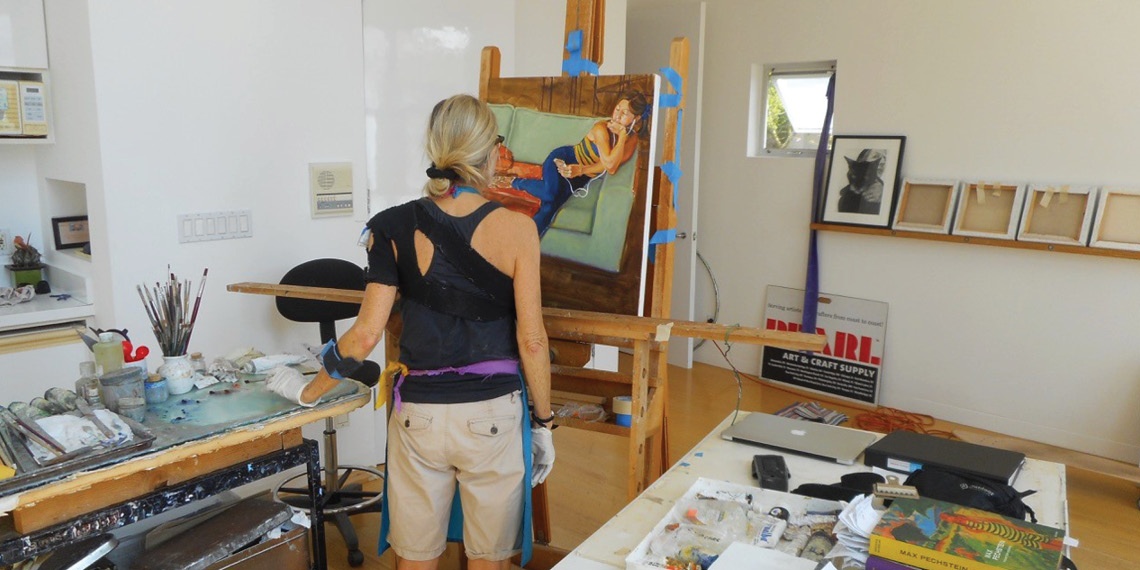
D.J. Hall gazes at the shimmering pool water, the centerpiece of the natural setting at her Cahuilla Hills home designed by her husband, architect Toby Watson.
“I’m a pleasure pig. I admit it,” says Hall, a spirited 70. “The pool is flawless. It’s like the pool of my childhood.”
Renowned for her exquisitely executed portraits of eternally youthful, beautiful people—celebrating the good life by the pool, at the beach, or having lunch—Hall is arguably the art world’s ambassador for Southern California. The Palm Desert artist’s large photo-like oil paintings have been shown in 25 solo exhibitions and more than 100 group exhibitions as far away as Japan and Germany. Sizable prices have been paid by 15 major corporations and art museums, including Bank of America, Kemper Insurance, New York City’s Metropolitan Museum of Art, and the Palm Springs Art Museum, where Hall had a 35-year retrospective in 2008.
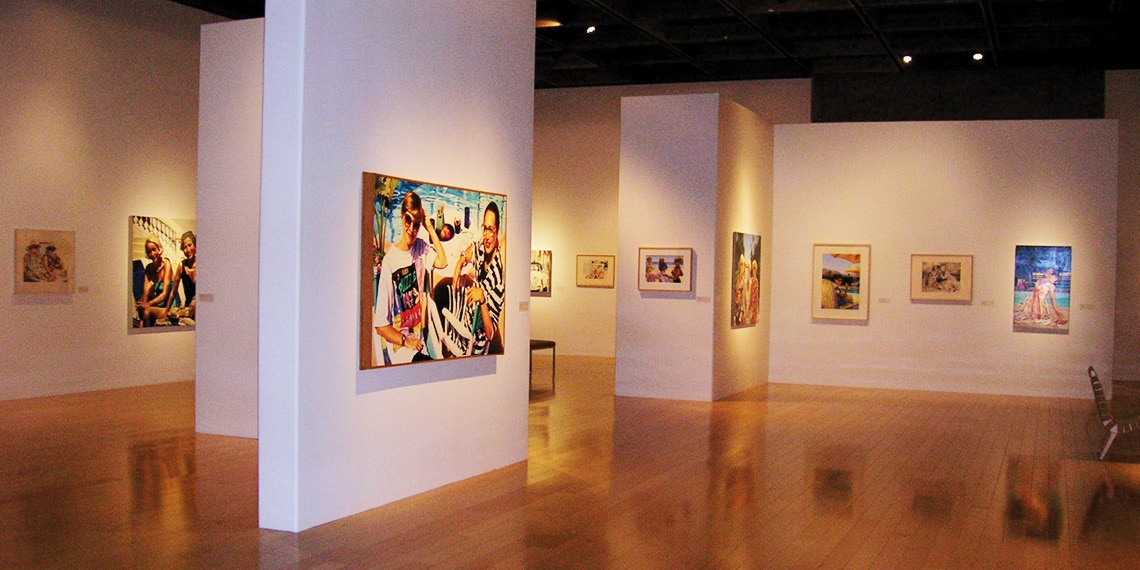 Hall Exhibition at the Palm Springs Art Museum
Hall Exhibition at the Palm Springs Art Museum
“It’s a real visual fantasy that I create,” says Hall, who also maintains a Watson-designed contemporary home in Venice, Calif. “It’s the best of times people can possibly have—the food, the wine, the beautiful clothing, the happy expressions.
“In my early work, I saw women as the enemy. This has to do with the fact that my mother and grandmother were so insecure as women. They saw every woman as being in competition with them. The way to compete was to be physically attractive.”
Except for an occasional background cameo by Hall’s husband of 48 years, men are no longer part of her artistic landscape.
“My main visual reference is women. They’re much more intriguing,” Hall says. “There’s a lot more expression in women’s faces and a greater variety of women’s hairstyles. Let’s blame it on Madison Avenue. The image of a woman is what’s used to sell everything in our society. I learned how to draw from that imagery, and Madison Avenue taught me well. It sounds strange, but I can’t help but sit and stare at women I consider attractive.
“I paint blondes because they are everyone’s idea of what a successful woman is. I look for women with great clothes, great teeth, and a wonderful pair of sunglasses.”
Hall’s quest for the perfect subject has taken her from the Coachella Valley to Jamaica, Mexico, Hawaii, Las Vegas, and Marina del Rey. “I’m creating a fantasy of the ideal life for myself. If I paint beautiful women enough, I’ll be a beautiful woman. If I paint blondes, somehow, I’ll stay blonde. If I paint young women, I’ll stay young.”
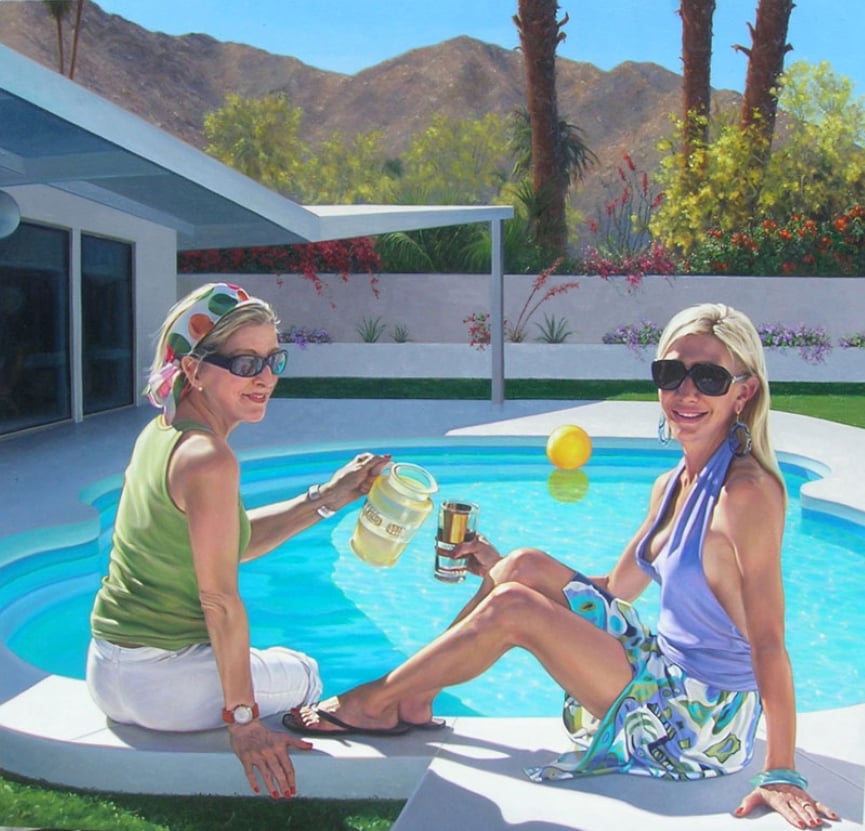 "Mellow" - Oil on Canvas - 60" x 64" - Price on Request
"Mellow" - Oil on Canvas - 60" x 64" - Price on Request
However, Hall admits her true subject matter isn’t women, per se; it’s light. Her search for the perfect illumination is never-ending.
“Light is how we see,” Hall says. “I’m painting the process of vision. Beautiful, warm light is what makes me happy. The desert offers intense light. I’m happy as an artist here, and I’m happy as myself here.”
Hall attributes her obsession with pleasure to her childhood. Happiness was not an initial ingredient of Hall’s upbringing in Santa Ana. An only child, her parents divorced when she was 2 years old. The roles of mother and daughter reversed when Hall found herself taking care of a young adult wracked with fear, anxiety and phobias.
It was during a trip to visit her paternal grandparents at their new vacation home in Palm Desert when she unlocked a creative door.
“I remember the first day driving through Palm Springs. It was November 1960,” she says. “I remember seeing light hitting white, pale green and pink walls. I instantly felt a sense of relief.”
As a pre-teen, Hall began sketching and drawing from her grandmother’s Vogue and Town and Country magazines. She wanted to be able to do likenesses.
Happiness arrived in the shape of a swimming pool. Hall’s grandparents would celebrate her birthdays with luxuriously elaborate parties. The pool’s water conveyed a sense of well-being and peace which years later would become important motifs in Hall’s work.
“My attraction to my work is the desire to have a perpetual summer,” she says. “I’m always painting summer light and playing out past, wished-for memories and the fantasy life that my mother would have liked to have had for herself.”
Hall went on to attend the University of Southern California (her parents’ alma mater), where she led a double life, of sorts: In art class, she did abstract work to satisfy her instructors; on the sly, she painted realist images for her own pleasure. She had found her art.
After graduating magna cum laude in 1973, Hall started to paint large canvasses detailing affluent people on vacation. She would photograph her subjects lounging and soaking up the sun at resorts. Hall would use the best parts of the photos—a face here, a hairstyle there, a body over there—to construct on canvas her own vision of the good life. Canvasses that were 4 feet wide and 6 feet tall would take her four to six months to complete—with her spending 50 hours a week in her studio.
At first, a young and rebellious Hall painted social commentaries against that lifestyle by showing every vein, wrinkle and blemish. Now, decades later, the art world’s appreciation of Hall—combined with the fact that she’s made a good living doing what she loves to do—has tamped down the nettle of Hall’s early adulthood. Her models and art collectors are her friends now.
While their contemporaries worried about coming up with the rent, the careers of Hall and Watson took off—with big New York shows at the renowned OK Harris gallery for Hall, and dozens of home designs in Southern California, Mammoth and Nashville, Tenn., for Watson.
After purchasing income properties in Venice in the ’70s and ’80s, Hall and Watson directed their attention toward the Coachella Valley. Hall believes there was divine intervention in their purchase of the late, legendary choreographer-director Busby Berkeley’s Palm Desert home, two blocks from her now-deceased grandparents.
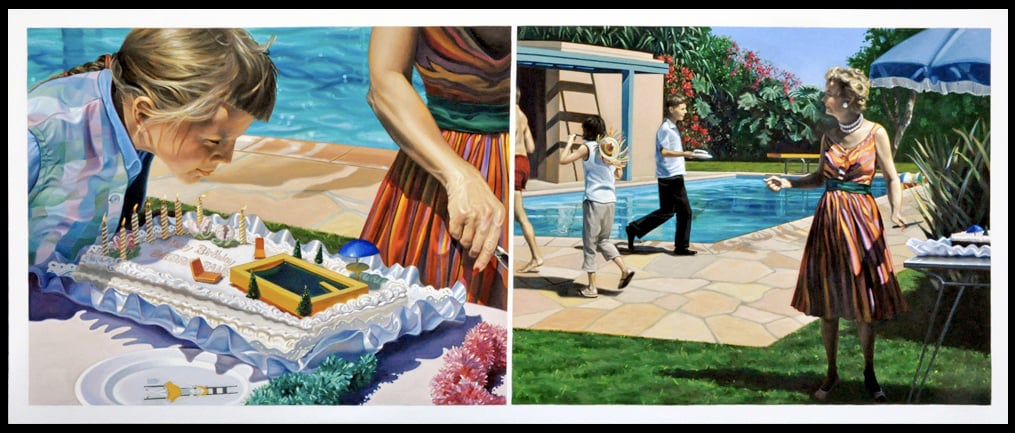 "Make a Little Wish" - Oil on Canvas - 44" x 108"- Price on Request
"Make a Little Wish" - Oil on Canvas - 44" x 108"- Price on Request
“As an adult, on my birthday, I would go with my husband to the desert and stay at (a) resort. My late grandmother, my late father, my cats and Mrs. Berkeley (Etta Dunn) wanted me to have this house,” Hall says. “Mrs. Berkeley passed away the day we closed escrow.”
The simple but comfortable home was built in 1957 and features a pool area that was the center of much entertainment. The Berkeleys loved the getaway abode, according to documents and photographs Hall found at the Academy of Motion Picture Arts and Sciences library. Many years ago, one guest of particular interest would turn out to be future Secretary of State Madeleine Albright.
“If these walls could talk,” Hall says.
The openness of the home led Hall and Watson to invite fellow artists such as Bruce Everett, collectors including Albert Contreras, models and writers (like the Los Angeles Times’ Suzanne Muchnic) to the desert for long weekends. The martini shaker that the Berkeleys left behind was used often.
A battle with Lyme disease nearly ended Hall’s career in the ’90s. In constant pain, she was limited to 15 minutes of painting a day at her lowest point. Hall turned to lecturing to young artists trying to find their strokes. She enjoyed a stint at Los Angeles’ Otis College of Art and Design, followed by a longer run at Loyola Marymount University. She taught life drawing and watercolor plein air painting, among other classes.
“At LMU, I was required to teach charcoal drawing, which is something I have avoided forever. Well, I fell in love with it!” she says. Hall has done small portraits of her husband; artist Craig Krull (who owns her Los Angeles gallery); and artist Don Bachardy (with Christopher Isherwood in the background).
After a strict regimen of physical therapy and medication, the effects of the Lyme disease subsided, and Hall is producing more work than ever—paintings, drawings, sketches (featured in a recent plein air show at the California Heritage Museum in Santa Monica), boxes and panels.
While Hall and Watson still own the Berkeley house, their current home is in the Cahuilla Hills, overlooking the Coachella Valley.
It came to be after Hall and Watson saw the five-acre parcel (equal to 44 lots in Venice) with a view, wildlife including bighorn sheep, and the “change of colors and shadows throughout each day and a constant light show throughout the year,” as Hall put it.
Possibly Watson’s farewell design, the airy, 2,400-square-foot steel-and-glass structure took nearly 15 years to design and develop, and was built in 2014, providing Hall with her largest studio to date.
When she isn’t working, Hall is in the pool—where she recently shared space with a rattlesnake—or on a solo hike in the mountains above the property that “hooks up with Art Smith or the Bump and Grind” trails.
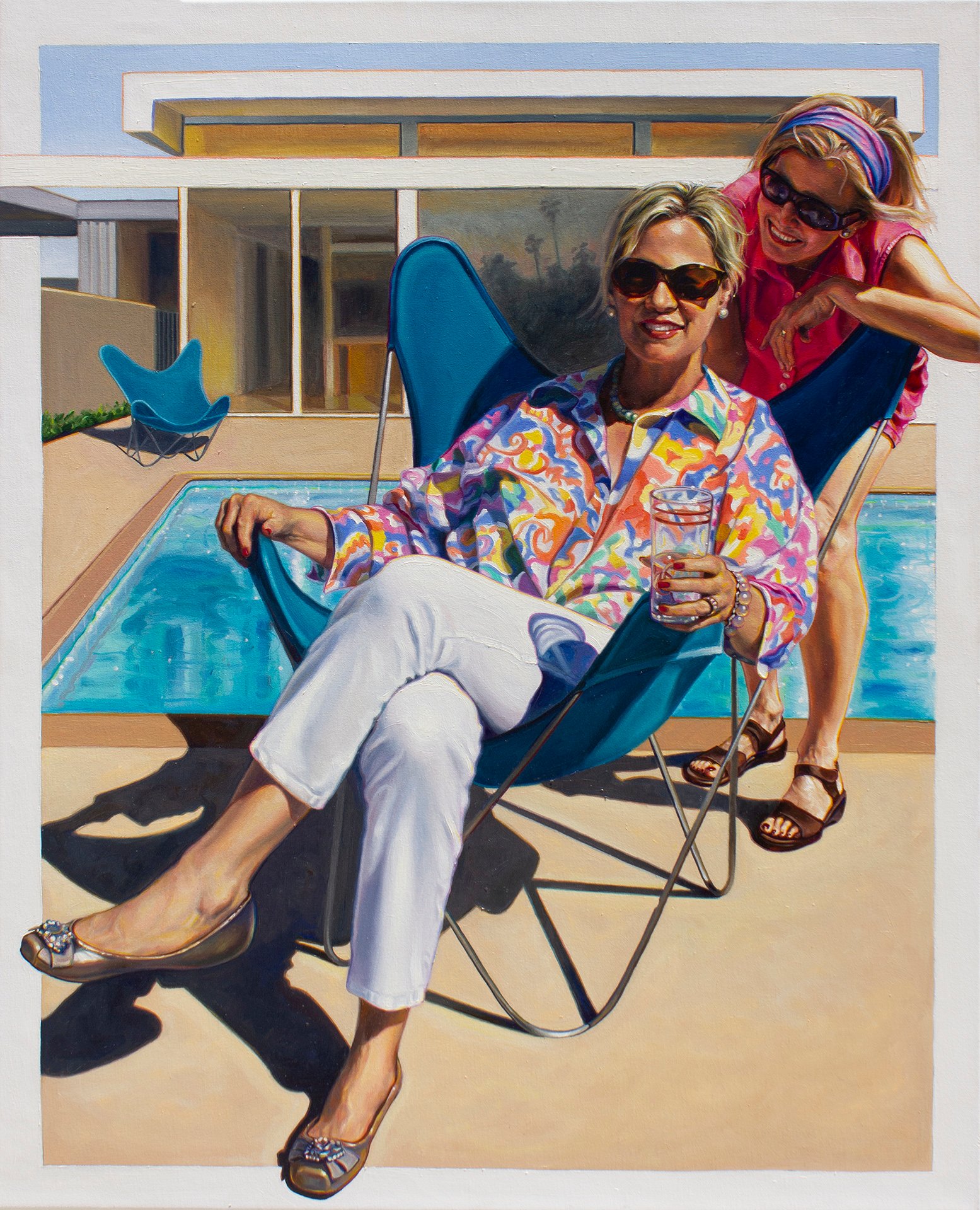 "Palm Springs Modern #1" - Oil on Canvas - 40" x 32" - Price on Request
"Palm Springs Modern #1" - Oil on Canvas - 40" x 32" - Price on Request
“I feel so happy here. I call it ‘the happy house.’ The good memories I have from my childhood and adolescence filter into my current experience.” Hall says. “My first romantic situations happened in Palm Desert.”
Watson isn’t smiling as much. He is concerned about dealing with neighbor Kempa Collection’s 9,000-square-foot Kempa Villa, complete with a heliport and celebrity Virgin CEO Richard Branson moving into the area.
Hall, meanwhile, has work to do—until she steps away from her latest commissioned painting, changes into a two-piece swimsuit and dives into the 80-degree pool.
“I was brought up with this façade, this idea that you have to be forever beautiful and young,” says Hall. “I have these crazy moments when I really believe it’s my responsibility to get my thighs back down to the thighs of a 14-year-old.”
Hall feels the worst promise ever made to women is that they can have it “all.”
“It’s really unfair what has been put on us. … We’re looking at 14-year-old models online and in magazines and trying to compete with them,” she says. “I’m an artist first, but I’m still working on becoming a woman. It’s still emerging. It’s sort of frightening, but I’m still growing up. Years ago, my husband suggested I keep the initials in my name, because, at that time, it was a man’s world in painting. It was probably better not to be overtly woman. Plus Debby, which is how I’d always thought of myself, sounded pretty unprofessional. It never occurred to me that I could be Debra.”
Back in her studio, Hall is at work—hair in a ponytail, eye glasses in place, plastic gloves on, sun visor sitting askew on her head. Her new project is three small canvasses for three Coachella Valley residents: Katherine Hough (chief curator of Hall’s 35-year retrospective at Palm Springs Art Museum), Leisa Austin (Imago Galleries) and Jessie French.
Hall uses paint made by Utrecht, Holbein, Grumbacher, and Winsor and Newton; chooses from nearly a hundred brushes of all sizes; and stretches her canvasses. Eternal youth has been compromised, and time is of the essence.
“After decades of finding models; choosing wardrobe, props and locations; planning; scripting; and story-boarding my photo shoots, and then directing for hours out in blasting sun and heat, it’s great now to develop my ideas and resulting reference images mostly on my laptop and Cintiq,” says Hall.
In 2018, Hall was approached by art dealer Christian Hohmann with the idea of having a “dialogue” with an artist from 100 years past—German expressionist Max Pechstein. Hall responded to Pechstein’s “distinctive oeuvre in a life spent documenting the people and places of the late 1800s and early 1900s in Germany” with her own images of “women enjoying the leisurely lifestyle of Southern California … exploring the intersection between his populace and hers.”
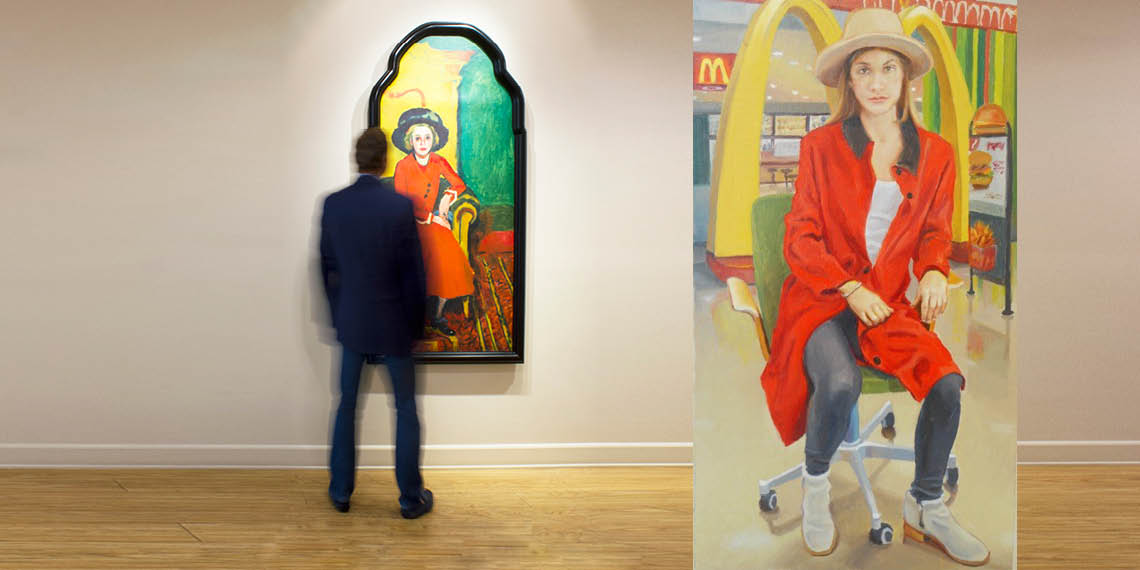
Max Pechstein at Hohmann Fine Art (left), "Raea, LMU Student, Los Angeles, CA" - 12.5" x 7" (right) - Price on Request
“I gave myself the permission to experiment and play around with many ideas that I have been floating for decades,” Hall says. “I love paying homage to my favorite artists.”
Hall says that painting and drawing the human figure is the hardest thing an artist can do.
“I’m less vicious in my work now, because I’m accepting myself more,” Hall says.
She’s also more secure: “A hundred years from now, when the current curators are gone, I expect my work to be hanging in more museums. It’s not going to end up in the trash heap.”
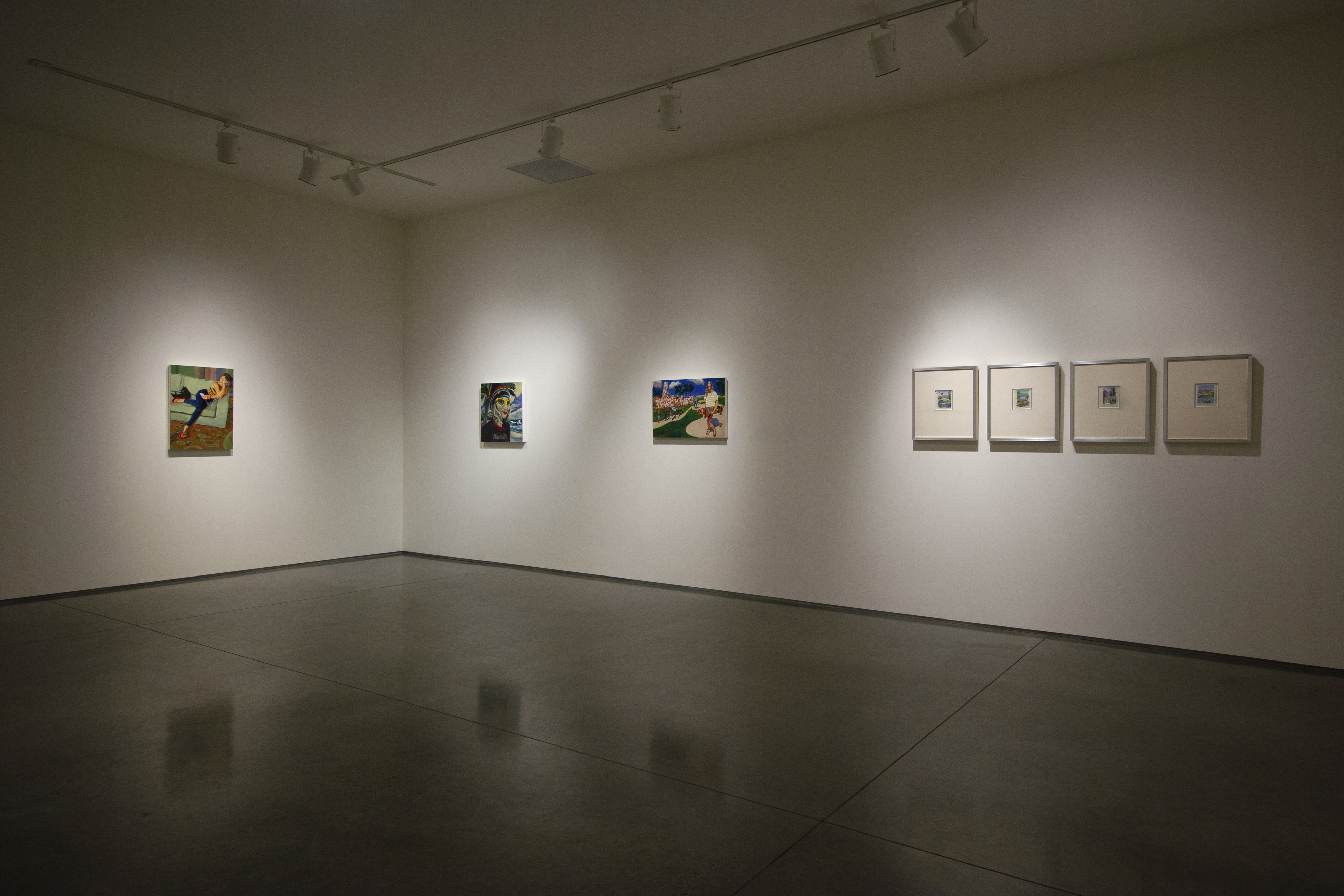
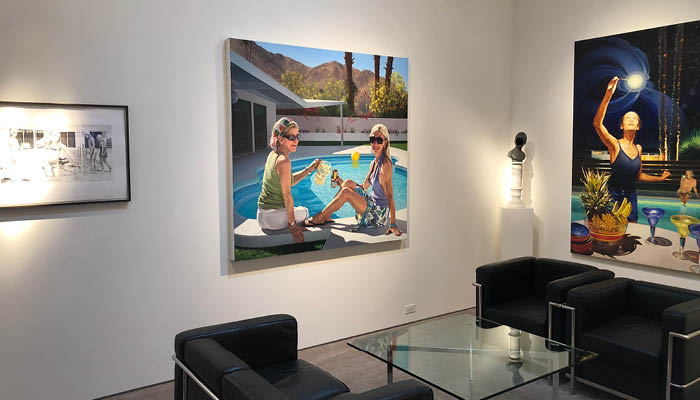
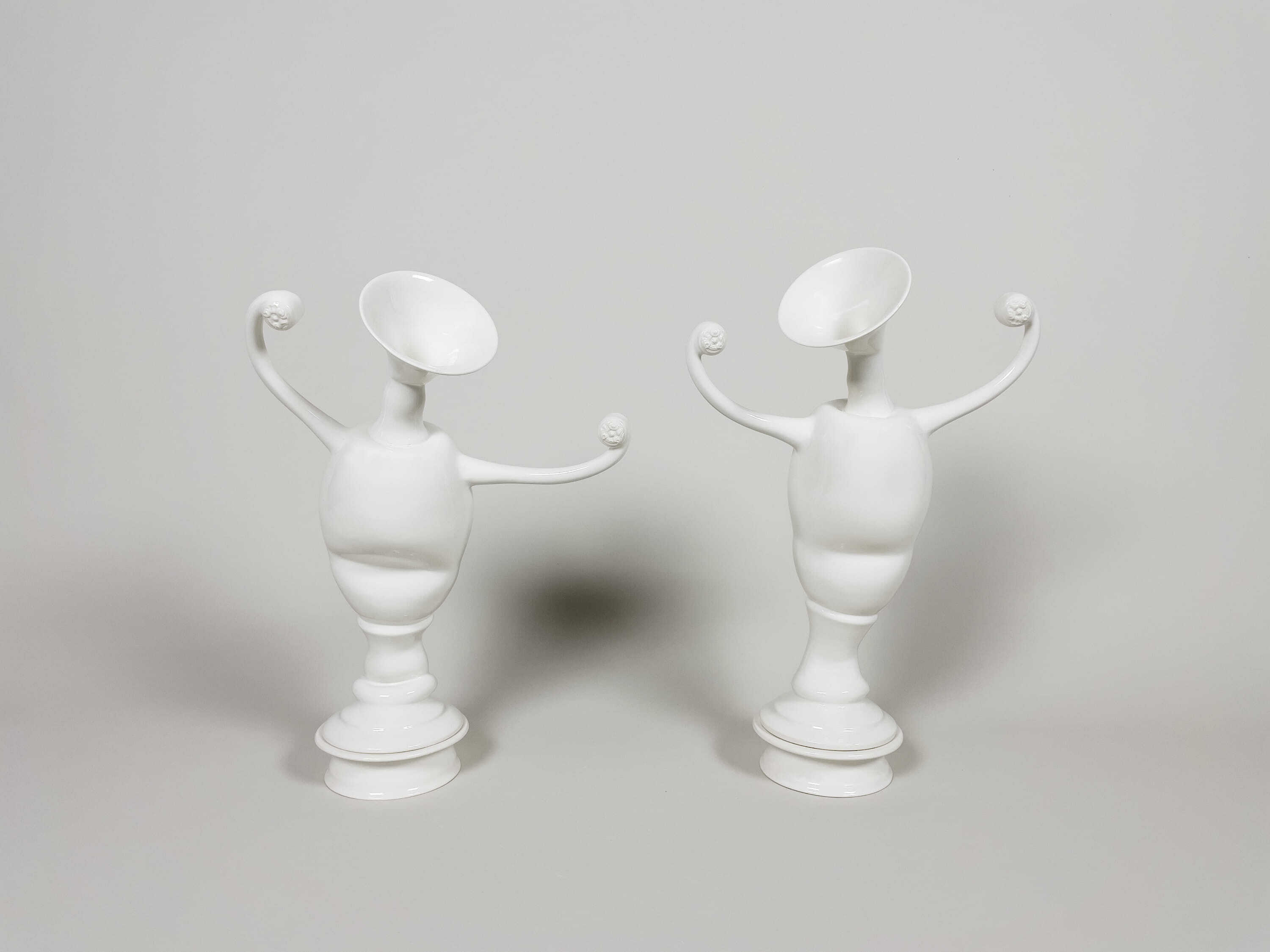
Everson Museum of Art Presents Iconoclasts: The Art of Laurent Craste
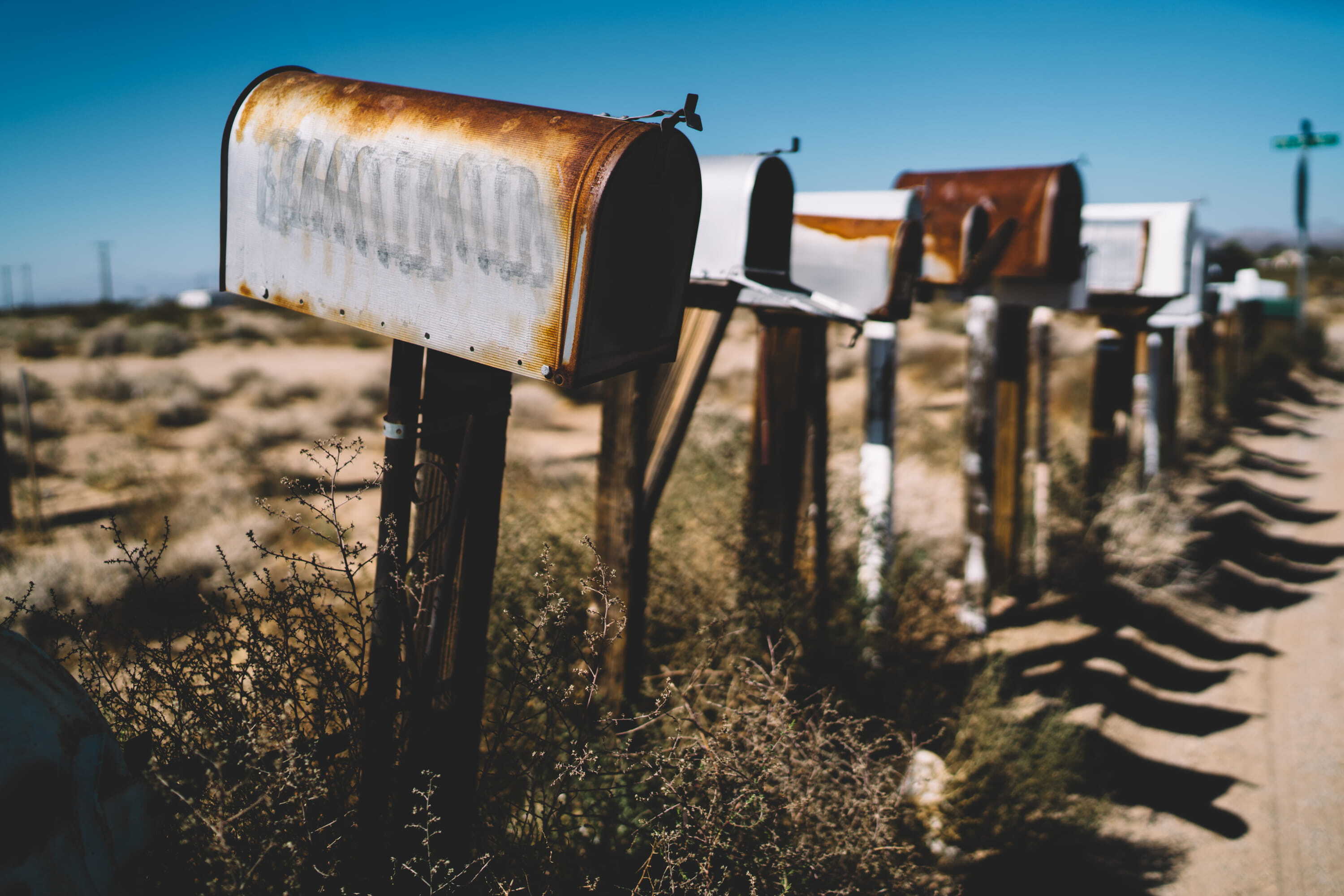
If you’ve recently had an email to us bounce back, don’t worry — there’s a simple explanation.
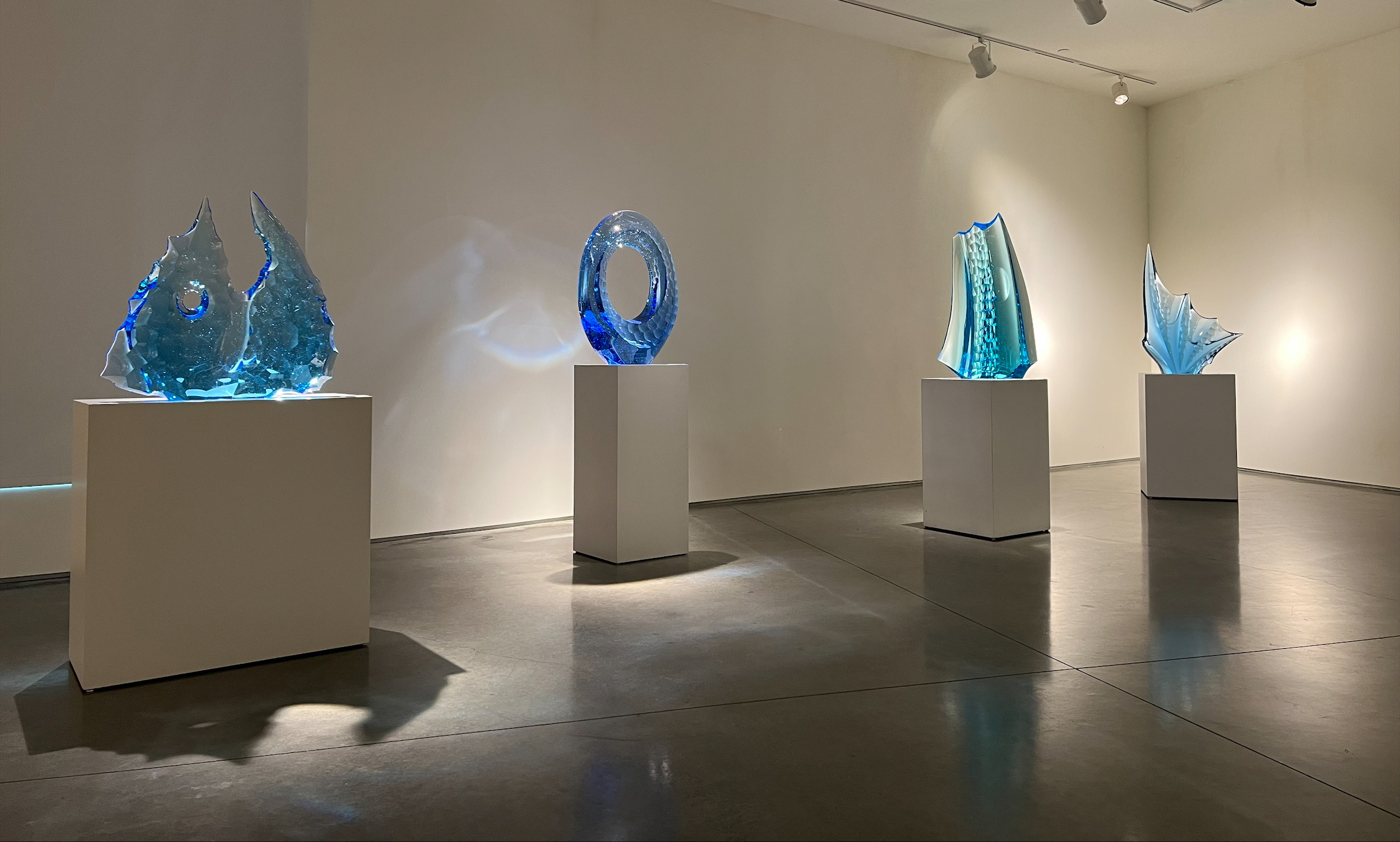
We are delighted to showcase a remarkable collection of glass artists this spring at our Village Court location, where the artistry and innovation of...